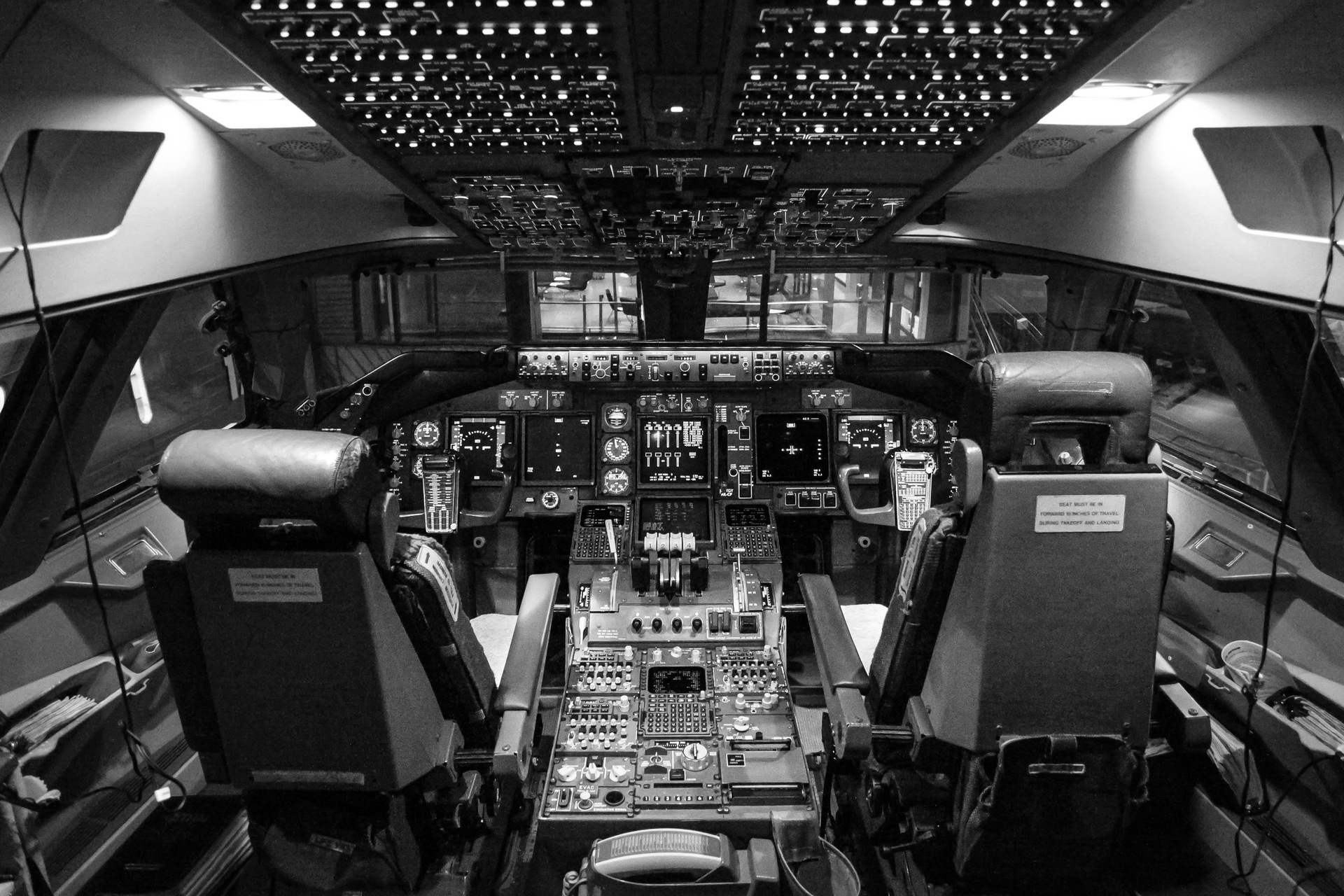
AeroGenie — Your Intelligent Copilot.
How Document Control in Aviation Ensures Compliance and Accessibility
January 27, 2025
Learn how ePlaneAI cuts audit prep time by 50% and reduces AOG cases by 27%, removing the headache of document management.
In the highly regulated aviation industry, precision and accountability are paramount. Accurate documentation is essential for every flight, maintenance procedure, and safety inspection. When document management is done effectively, operations can run smoothly, aircraft remain airworthy, and airlines comply with regulatory bodies.
Yet traditional control processes are often manual, fragmented, and prone to errors, posing significant risks to document compliance and accessibility.
This article explores the critical role of document control in aviation, the challenges of traditional systems, and how advanced tools like those offered by ePlaneAI are revolutionizing the way airlines manage, access, and utilize their documentation.
The challenges of traditional document control in aviation
Aviation companies generate and rely on an immense volume of documentation. This includes everything from maintenance logs and technical manuals to safety protocols and regulatory filings. Managing these documents effectively is no small feat, especially given the following challenges:
1. Manual processes
Traditional document control often relies on paper-based records or outdated data systems. These methods are time-consuming, prone to human error, and make it challenging to maintain version control.
A misplaced or outdated maintenance manual could lead to incorrect repairs, compromising aircraft safety and risking hefty regulatory fines.
2. Fragmented systems
Documentation is frequently stored across multiple systems or departments, creating silos that hinder accessibility. Maintenance teams, compliance officers, and flight crews may struggle to find the information they need, leading to delays and inefficiencies.
3. Regulatory complexity
The aviation industry is governed by strict regulatory standards, including FAA, EASA, and ICAO. Ensuring that documentation aligns with these guidelines requires meticulous attention to detail, which is challenging with fragmented or outdated systems.
Non-compliance fines in aviation can cost up to $250,000 per infraction per aircraft, emphasizing the importance of proper document control.
4. Accessibility issues
In emergency situations, quick access to accurate information is critical, given the volume of paperwork.
A single U.S. aircraft may require upwards of 7,500 pages of documentation annually to meet FAA and DOT requirements, illustrating the critical need for rapid, streamlined access.
Traditional systems often fail to provide real-time accessibility, delaying crucial decisions and increasing risks.
The benefits of advanced document control systems in aviation
To address the challenges of traditional document control, modern solutions leverage digital tools, AI, and cloud-based platforms.
These systems streamline the way airlines manage, access, and maintain records for enhanced document compliance and operational efficiency. Here’s how advanced document control systems benefit the aviation industry:
Enhanced compliance management
Regulatory compliance is non-negotiable in aviation. Advanced document control systems keep all necessary records up-to-date, accurately maintained, and readily accessible during audits or inspections.
- Automated version control: Modern platforms automatically track and update document versions, arming teams with the latest information.
- Compliance alerts: AI-driven tools can flag upcoming regulatory deadlines or documentation gaps, allowing airlines to address issues proactively.
ePlaneAI integrates predictive maintenance models to reduce unscheduled maintenance incidents, helping ensure compliance with strict FAA operational standards while minimizing costly downtime.
Improved accessibility across teams
Advanced systems centralize documentation, making it easily accessible to all authorized personnel. The right information is always at their fingertips, whether it’s a maintenance technician needing a technical manual or a compliance officer reviewing safety protocols.
- Cloud-based access: With cloud-based platforms, employees can access critical documents from any location, improving efficiency during emergencies or maintenance operations.
- User permissions: Role-based access restricts sensitive documents to credentialed users, enhancing security and safeguarding critical information.
Role-based access controls in ePlaneAI are set up so that only authorized personnel can access sensitive documents while allowing real-time updates. This capability enhances security and operational efficiency, enabling maintenance teams to access technical manuals on-site or remotely without delays.
Real-time updates and notifications
In aviation, outdated information can have catastrophic consequences. Advanced document control systems provide real-time updates, helping ensure that teams are always working with the most accurate and relevant data.
ePlaneAI integrates seamlessly with existing ERP and maintenance systems, providing real-time updates and notifications to keep teams informed of critical changes. Instant alerts notify maintenance personnel of schedule modifications, part delays, or unexpected issues, improving response times and operational alignment.
Real-time decision tree models dynamically adjust maintenance schedules and procedures, so that teams have the most accurate and relevant data. This functionality reduces delays, enhances compliance with safety protocols, and minimizes risks associated with outdated or incomplete information.
How ePlaneAI is transforming document control in aviation
ePlaneAI is at the forefront of modernizing document control in the aviation industry, combining AI-powered insights, seamless integrations, and user-friendly interfaces to help airlines achieve compliance and operational excellence.
Centralized documentation hub
ePlaneAI’s platform acts as a single source of truth for all aviation documents. From technical manuals to compliance records, everything is stored in a centralized hub that eliminates silos and improves accessibility.
ePlaneAI’s centralized data hub improves accessibility by reducing document retrieval and audit preparation time by up to 50%. As a result, team members can make decisions faster and eliminate silos across departments.
AI-driven compliance tools
ePlaneAI leverages AI to monitor regulatory changes and assess compliance risks. This proactive approach allows airlines to address potential issues before they escalate.
- Regulatory monitoring: The system tracks changes in FAA, EASA, and other aviation standards, automatically updating relevant documentation.
- Predictive compliance audits: AI identifies high-risk areas and prepares airlines for audits, reducing the likelihood of penalties.
Businesses using ePlaneAI to manage operations and compliance-critical documents achieve over 98% field-level accuracy, minimizing errors and saving significant labor and cost.
A large MRO typically saves $25,000 a year on document processing when upgrading to ePlaneAI.
Advanced features of modern document control systems
As the aviation industry embraces digital transformation, document control systems are evolving to include advanced features that address the complexities of airline operations. Here are some of the cutting-edge capabilities that make platforms like ePlaneAI indispensable:
Intelligent search capabilities
Finding the right document in a sea of files can be a daunting task, especially in industries that rely on extensive technical manuals and compliance reports.
Modern systems address this challenge by integrating AI-driven search functionality, which enables users to locate documents quickly and efficiently without sifting through endless files.
Natural language processing (NLP) plays a key role in simplifying the search process. Users can type queries in plain language—such as “latest maintenance manual for Boeing 777”—and instantly retrieve the required document, saving valuable time and effort.
Similarly, both keyword and metadata tagging improve search capabilities by automatically categorizing documents with relevant keywords. This tagging system makes it easier to organize files and improves overall search accuracy.
ePlaneAI continuously refines its AI models to adapt to evolving document forms and improve data extraction accuracy, particularly for more complex fields or uncommon forms.
Currently, ePlaneAI has a 99% accuracy rate at the character level when extracting essential data from documents like part numbers, user guides, and service records.
Seamless integration with operational systems
Advanced document control platforms are designed to integrate seamlessly with other aviation systems, including archival frameworks. This seamless integration allows critical processes across various systems to work in harmony, reducing friction and improving overall operational agility.
Real-time data syncing plays a crucial role in maintaining consistency across platforms. Changes made in one system are automatically reflected in others, ensuring that all teams are working with the most up-to-date information.
Additionally, operational dashboards simplify workflows for maintenance teams by providing direct access to relevant documents. Instead of navigating through multiple systems, teams can retrieve the information they need from a single, user-friendly interface, significantly improving efficiency and reducing the potential for errors.
Mobile accessibility for on-the-go teams
In the aviation industry, mobile access to critical documentation is vital for maintaining efficiency and safety. Technicians performing repairs on the tarmac and pilots reviewing flight procedures need reliable platforms that make information readily available, no matter where they are.
Mobile-friendly systems address this need by offering offline access, giving users the ability to download essential documents and continue operations even in remote locations without connectivity.
Once connectivity is restored, real-time syncing updates any changes made in the field in the central system, keeping everyone on the same page.
ePlaneAI has helped airlines slash AOG cases from 70% to 43% through its automated document tracking tools for consistent visibility into maintenance scheduling and parts on hand.
Automated workflows for enhanced efficiency
Modern systems leverage automation to streamline document-related workflows, making processes like approvals, updates, and distribution more efficient.
For documents requiring multiple levels of approval, automation routes them effortlessly through the necessary channels, significantly reducing delays and eliminating the need for manual follow-ups.
Beyond that, advanced systems can schedule periodic reviews of critical documents to maintain compliance with the latest regulations, ensuring airlines stay ahead of ever-evolving industry standards.
The benefits of automation are evident in real-world applications. ePlaneAI’s automation tools have reduced RFQ (Request for Quotation) response times by over 70%, enabling procurement teams to secure essential parts more quickly and avoid operational delays.
These capabilities underscore how automation transforms traditional document management, refining it into a proactive, streamlined process that drives better outcomes across aviation operations.
ROI of effective document control in aviation
Investing in advanced document control systems is not just about compliance—it’s about delivering tangible returns. Here’s how airlines benefit financially:
Cost savings
Advanced document control systems deliver measurable financial benefits by streamlining operations and reducing process redundancies and operational gaps. Platforms like ePlaneAI enhance automation for workflows such as approvals, updates, and compliance checks, freeing teams to focus on higher-value tasks.
One airline achieved significant savings by optimizing its inventory management with ePlaneAI.
Actionable insights gained through our AI solutions have helped businesses lower their total inventory holdings by 30%, improve forecasting by 30%, and reduce inventory-driven AOG events by 20%.
Operational uptime
Effective document control minimizes downtime in aviation operations by providing maintenance teams with quick access to the latest manuals and records.
ePlaneAI’s Document AI reduces processing time from 5 minutes per document to mere seconds, allowing businesses to process 10x or more documents without added labor costs.
This efficiency minimizes delays and improves operational pace, mitigating unplanned maintenance or unplanned downtime. Repairs can be completed with smarter resource allocation, and airlines can expand fleet availability and reduce transit delays for passengers and cargo.
Improved safety and compliance
Accurate documentation is critical for maintaining safety and meeting regulatory standards in aviation. Properly managed records help teams follow the correct procedures, reducing errors and improving overall operational safety.
Centralized document control systems streamline audit processes by allowing airlines to access and present required documents instantly. This simplifies compliance checks and reduces the time and effort spent on audit preparation.
Automated alerts and real-time monitoring help find possible compliance risks before they get worse. This helps reduce the chance of costly non-compliance incidents. These capabilities make advanced document management a cornerstone of safer and more reliable airline operations.
Meeting tomorrow’s document control challenges
In an industry as complex and regulated as aviation, effective document control is critical for ensuring compliance, accessibility, and industrial resilience. Traditional methods no longer suffice, and airlines must embrace advanced tools to stay competitive.
Platforms like ePlaneAI are transforming the way airlines manage their documentation, providing centralized hubs, AI-driven insights, and automated workflows that drive measurable ROI wins. From reducing costs and improving uptime to enhancing safety and compliance, the benefits are clear.
Ready to revolutionize your document management processes? Contact ePlaneAI today to discover how our solutions can help your airline achieve new heights in efficiency and compliance.
Aviation Maintenance Trends That May Gain Momentum in Uncertain Circumstances
Aircraft are staying in service longer, supply chains are a powder keg, and the tech is evolving overnight. Discover the maintenance trends gaining momentum and what they mean for operators trying to stay airborne and profitable.

October 2, 2025
Choosing the Right Aircraft Parts with Damage Tolerance Analysis
The future of aviation safety is all about the parts. Authentic, traceable parts bring optimal damage tolerance and performance to fleets for maximum safety and procurement efficiency.

September 30, 2025
How to Enter New Aviation Markets: The Complete Guide for Parts Suppliers
Breaking into new aviation markets? Learn how suppliers can analyze demand, manage PMA parts, and build airline trust. A complete guide for global growth.

September 25, 2025
5 Aviation Marketing Strategies You Should Use to Sell to Global Airlines
Airlines face shrinking margins and rising expectations. See how top strategies—dynamic offers, partnerships, personalization, and more—can close deals with global carriers.
